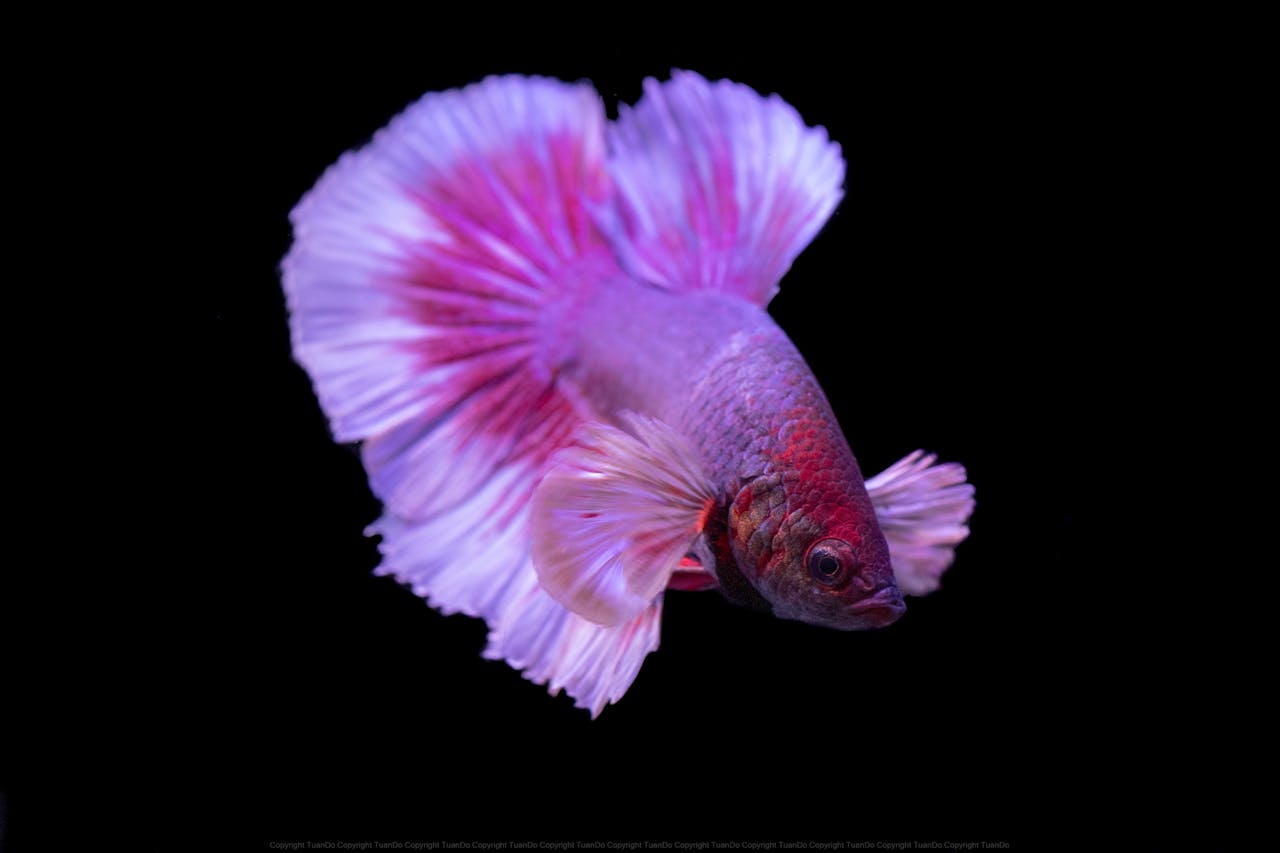When we think of betta fish, our minds often gravitate towards the vibrant colors and flamboyant fins of their male counterparts. However, female betta fish deserve equal recognition for their unique charm and captivating presence. These aquatic beauties, often overshadowed by their male relatives, possess a distinct allure that is both subtle and striking.
As we delve into the world of female betta fish, we will uncover their beauty, strength, and the vital role they play in both their natural habitats and as beloved pets. Female betta fish, scientifically known as Betta splendens, are not just a lesser version of males; they are a remarkable species in their own right. While they may lack the extravagant fins and vivid colors that males flaunt during mating displays, females exhibit a more understated elegance.
Their bodies are often adorned with softer hues and patterns that can be just as mesmerizing. By exploring the characteristics and behaviors of female bettas, we can gain a deeper appreciation for these fascinating creatures and understand why they are worthy of our admiration.
Key Takeaways
- Female Betta fish are often overlooked in favor of their more colorful male counterparts, but they have their own unique beauty and characteristics.
- Female Betta fish come in a wide range of colors and patterns, making each one unique and beautiful in their own way.
- Female Betta fish are known for their strength and resilience, making them well-suited for life in the wild and as pets.
- In the wild, female Betta fish live in shallow, slow-moving waters in Southeast Asia, where they display their vibrant colors and interact with other fish.
- As pets, female Betta fish require proper care, including a suitable tank, water conditions, and a balanced diet to thrive and display their full beauty.
The Unique Beauty of Female Betta Fish
Color Palette
From soft pastels to deep jewel tones, the color palette of female bettas is a testament to nature’s artistry. Their fins, while shorter than those of males, can still display intricate designs and delicate movements that captivate observers.
Behavior and Personality
Moreover, the beauty of female bettas is not solely defined by their physical appearance. Their behavior adds another layer of charm to their character. Female bettas are known for their playful nature and social interactions, often engaging in displays of curiosity and intelligence.
A Joy to Observe
Watching them explore their environment or interact with tank mates can be a delightful experience, revealing a personality that is as vibrant as their colors. This combination of visual appeal and engaging behavior makes female bettas a joy to observe and appreciate.
The Strength and Resilience of Female Betta Fish

Beyond their aesthetic qualities, female betta fish embody strength and resilience. In the wild, these fish face numerous challenges, from fluctuating water conditions to predation. Their ability to adapt to various environments is a testament to their survival instincts.
Female bettas are known to thrive in both calm waters and more turbulent settings, showcasing their versatility as a species. This adaptability is not just a survival mechanism; it reflects their inherent strength as individuals. In addition to their physical resilience, female bettas also exhibit remarkable behavioral strength.
They are known to establish hierarchies within groups, displaying assertiveness when necessary. This social structure is crucial for maintaining harmony in their communities, as it helps prevent conflicts and ensures that resources are shared effectively. Observing these interactions can provide insight into the complex social dynamics of female bettas, highlighting their intelligence and capacity for cooperation.
Female Betta Fish in the Wild
| Aspect | Information |
|---|---|
| Habitat | Shallow waters of rice paddies, swamps, and slow-moving streams in Southeast Asia |
| Diet | Small insects, zooplankton, and algae |
| Size | Average length of 2.4 inches (6 cm) |
| Coloration | Varies from dull green to vibrant red and blue |
| Reproduction | Female builds bubble nest for eggs, male guards nest and cares for young |
In their natural habitat, female betta fish inhabit shallow waters such as rice paddies, swamps, and slow-moving streams across Southeast Asia. These environments are rich in vegetation, providing ample hiding spots and breeding grounds.
In the wild, female bettas often form small groups or schools, where they can socialize and engage in various activities. The life of a female betta in the wild is not without its challenges. They must navigate through a landscape filled with potential threats, including larger fish and environmental changes.
However, their ability to adapt to these conditions speaks volumes about their resilience. Female bettas have developed strategies for survival, such as seeking refuge among dense foliage or utilizing their agility to evade predators. This adaptability is a crucial aspect of their existence in the wild, allowing them to thrive despite the odds stacked against them.
Female Betta Fish as Pets
As we transition from the wild to our homes, female betta fish have become increasingly popular as pets. Their captivating beauty and engaging personalities make them an excellent choice for both novice and experienced aquarists alike. Unlike male bettas, who often require solitary living conditions due to their aggressive nature, female bettas can coexist peacefully with other fish when housed in appropriate environments.
This social aspect makes them an appealing option for community tanks. Moreover, female bettas are relatively low-maintenance pets compared to some other species. They adapt well to various water conditions and can thrive in smaller tanks, making them suitable for those with limited space.
Their hardiness means that they can withstand minor fluctuations in water quality, which is particularly beneficial for beginners who may still be learning the ropes of aquarium care. By choosing female bettas as pets, we not only bring beauty into our homes but also gain companions that offer joy and fascination.
Caring for Female Betta Fish

Caring for female betta fish requires attention to detail and an understanding of their specific needs. To create a suitable environment for these aquatic beauties, we must ensure that their tank is adequately sized—ideally at least five gallons—to provide ample swimming space. Additionally, incorporating plants and hiding spots can help replicate their natural habitat while offering security and stimulation.
Water quality is paramount in maintaining the health of our female bettas. Regular testing for parameters such as pH, ammonia levels, and temperature is essential to ensure a stable environment. Female bettas thrive in warm water temperatures ranging from 76°F to 82°F (24°C to 28°C), so investing in a reliable heater is crucial.
Furthermore, providing a balanced diet consisting of high-quality pellets, frozen or live foods will promote optimal health and vibrant colors.
Breeding Female Betta Fish
Breeding female betta fish can be an exciting endeavor for those interested in expanding their knowledge of these fascinating creatures. However, it requires careful planning and consideration. Before embarking on this journey, we must ensure that both the male and female are healthy and well-conditioned for breeding.
Selecting compatible partners based on color patterns and fin types can lead to stunning offspring. The breeding process itself involves creating a suitable environment where the male can build a bubble nest—a crucial element for successful spawning. Once the nest is established, introducing the female should be done cautiously to minimize stress.
Observing their interactions during this time is essential; while males may display aggressive behavior towards females initially, it’s important to monitor for signs of excessive aggression that could harm the female. After successful spawning occurs, separating the male from the female is necessary to protect her from potential aggression while he tends to the eggs. The fry will hatch within a few days, requiring specialized care as they grow.
Providing appropriate food and maintaining optimal water conditions will ensure healthy development as they transition into juvenile fish.
Appreciating the Beauty and Strength of Female Betta Fish
In conclusion, our exploration of female betta fish has revealed a world rich with beauty, strength, and resilience. These remarkable creatures deserve our admiration not only for their captivating appearance but also for their adaptability and social dynamics in both wild and domestic settings. As we appreciate the unique qualities of female bettas, we also recognize the importance of responsible care and breeding practices that contribute to their well-being.
By embracing the beauty and strength of female betta fish, we foster a deeper connection with these aquatic companions. Whether we choose to keep them as pets or simply admire them from afar, understanding their needs and behaviors enriches our experience as caretakers and enthusiasts alike. Ultimately, female betta fish remind us that true beauty lies not only in vibrant colors but also in resilience and adaptability—qualities that resonate deeply within us all.
If you are interested in learning more about female betta fish, you may want to check out this article on how to care for female bettas. This article provides valuable information on the specific needs and behaviors of female bettas, helping you create a healthy and thriving environment for your fish. Additionally, you may also find this article on getting started with betta fish. Happy fish keeping!


